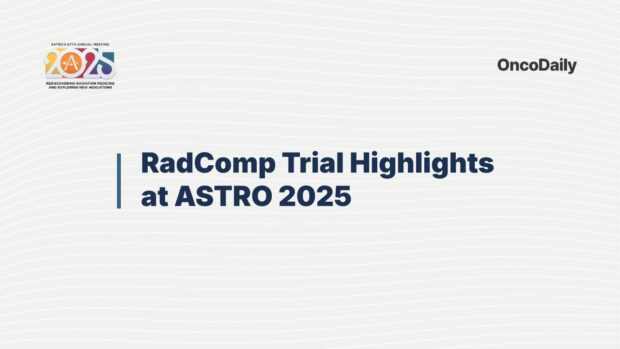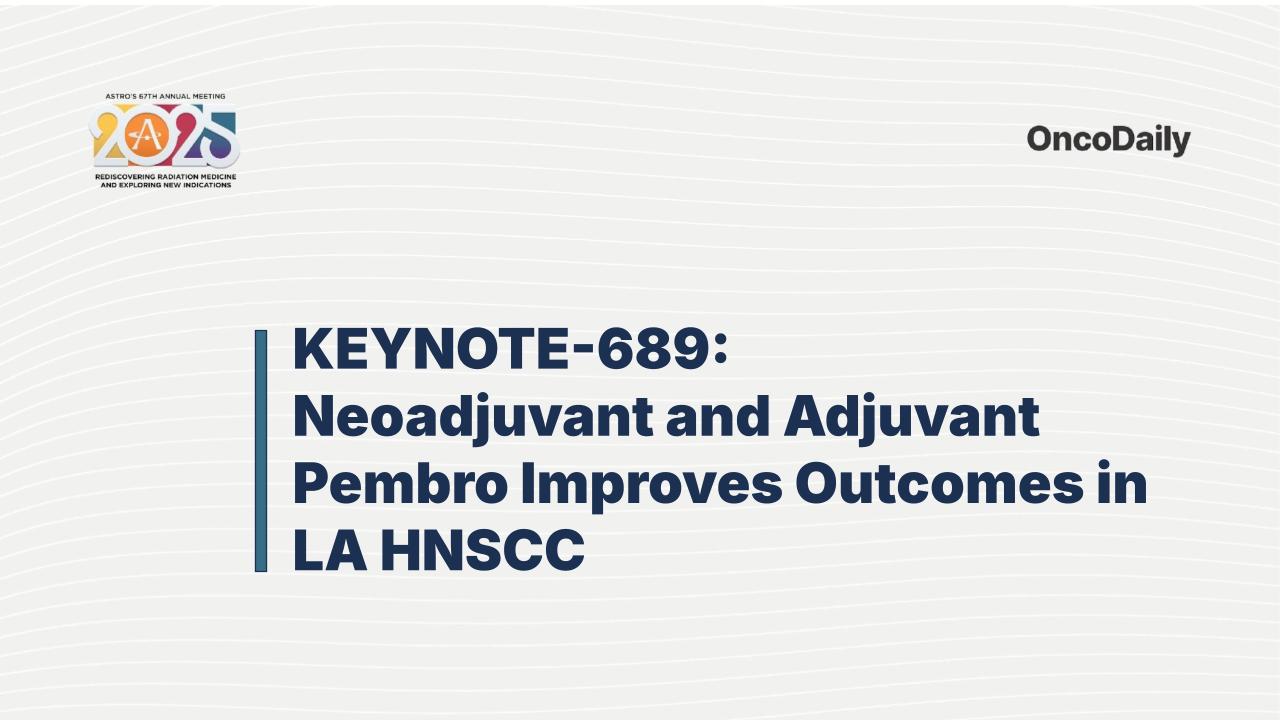Authors: N.Y. Lee, D. Adkins, R.I. Haddad, Y. Tao, C. Le Tourneau, W.H. Westra, R. Chernock, M. Tahara, K. Harrington, A. Klochikhin, R. Granado Carrasco, G.V. Alves, B.G.M. Hughes, M. Oliva, I.P. Figueiredo Lima, T. Ueda, C. Manschot, K. Benjamin, B. Gumuscu, and R. Uppaluri
A post-hoc subgroup analysis of the phase III KEYNOTE-689 trial evaluated the effect of adding neoadjuvant and adjuvant pembrolizumab (pembro) to standard of care (SOC) in patients with resectable locally advanced head and neck squamous cell carcinoma (LA HNSCC), stratified by postoperative risk features.
Study design
Patients with resectable SCC of the oral cavity, larynx, hypopharynx (stage III/IVA), or oropharynx (stage III/IVA p16+ or stage III T4 N0-2 p16+) were randomized 1:1 to pembro plus SOC or SOC alone. Pembro dosing included two neoadjuvant cycles, three adjuvant cycles concurrent with postoperative radiotherapy (PORT), followed by 12 cycles beyond PORT. SOC comprised surgery plus PORT (60 Gy for low risk, 66 Gy for high risk) with three cycles of concurrent cisplatin for high-risk patients.
Postoperative pathological features were assessed by a blinded independent pathologist, categorizing patients into high-risk (positive margins <1 mm or extranodal extension) or low-risk subgroups. Event-free survival (EFS) by blinded independent central review was evaluated by subgroup as a prespecified exploratory analysis.
Read More ASTRO 2025 Late-Breaking Abstracts Here
Results
Population and treatment delivery:
- 363 patients were randomized to pembro + SOC and 351 to SOC.
- Surgery completion rates were 88.4% and 87.7%, respectively.
- High-risk features were present in 32.5% of the pembro + SOC group and 44.4% of SOC patients.
- The majority received PORT (274 vs 275), with concurrent cisplatin administered to 107 vs 139 patients.
- Median total PORT dose was 60.0 Gy in the pembro + SOC arm versus 66.0 Gy in the SOC arm.
High-risk subgroup:
- Median EFS: 41.1 months (pembro + SOC) vs 19.5 months (SOC), HR 0.73 (95% CI 0.52–1.05)
- 3-year EFS: 52.0% vs 40.7%
- Grade ≥3 treatment-related adverse events (TRAEs): 52.1% vs 53.9%
- PORT discontinuation due to any-cause AEs: 3 vs 1 patient
Low-risk subgroup:
- Median EFS: not reached (pembro + SOC) vs 51.5 months (SOC), HR 0.74 (95% CI 0.51–1.08)
- 3-year EFS: 67.7% vs 58.8%
- Grade ≥3 TRAEs: 42.9% vs 30.4%
- PORT discontinuation due to any-cause AEs: 4 vs 3 patients
Takeaway
This subgroup analysis demonstrates that adding neoadjuvant and adjuvant pembrolizumab to SOC is associated with fewer patients exhibiting high-risk pathological features and allowed some patients to receive lower radiation doses without cisplatin. Efficacy improvements were observed in both high- and low-risk subgroups, aligning with the primary analysis of KEYNOTE-689.
The safety profile of pembrolizumab combined with PORT ± cisplatin was consistent with expectations, and no new safety signals were reported. These results suggest that pembro plus SOC can modulate postoperative risk features, potentially optimizing treatment intensity and improving outcomes for patients with resectable LA HNSCC.

Read About the RadComp Trial Highlights
Written By Aren Karapetyan, MD
